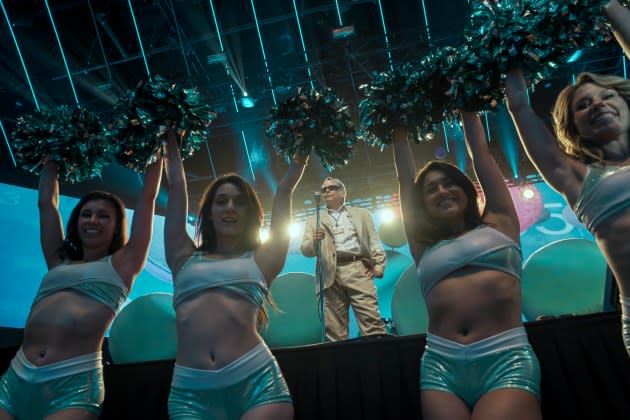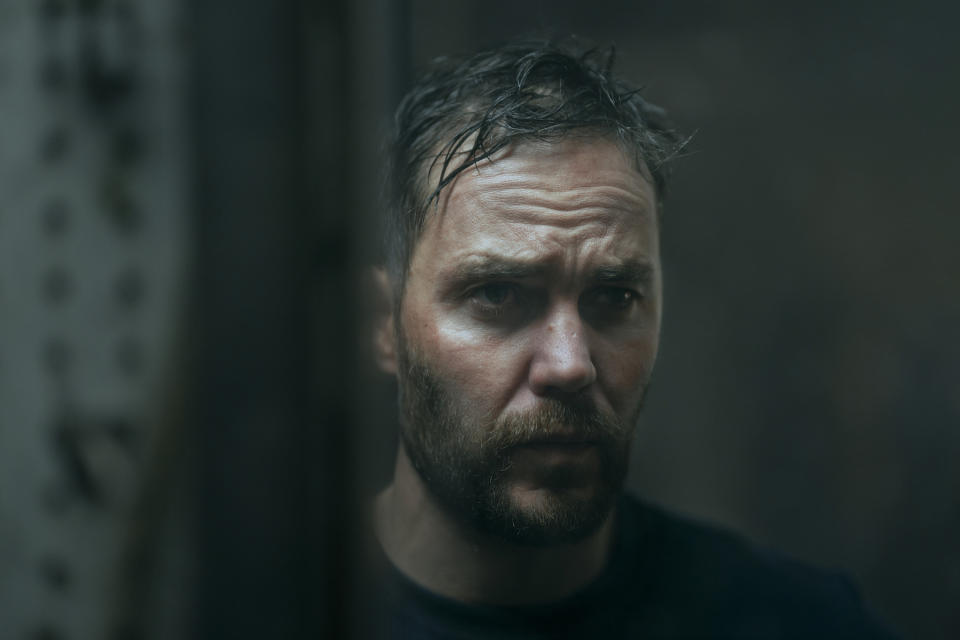Netflix Exposes How the Sacklers Sold Sex to Trigger an Opioid Killing Spree

Cults come in many shapes, sizes and forms, not all of them involving a charismatic figurehead, secluded hideaway, or cache of weapons. Sometimes, as in Netflix’s lively new Sackler family takedown Painkiller, the angels of death are short-skirted sales reps, heroin Barbies who scream their heads off at sales “conferences” and seduce doctors with gifts, hefty speaker fees, and, sometimes, sex. They’re paid handsomely, plied with Porsches and luxury apartments, all for spreading the lethal lies that Oxycontin isn’t terribly addictive and doctors are professionally if not morally obligated to prescribe the highest doses possible.
The limited series, directed by Peter Berg and created by Micah Fitzerman-Blue and Noah Harpster, is merely the latest howl of rage directed at the Sackler empire, whose Purdue Pharma corporation aggressively pushed a highly addictive opioid on the public to the tune of hundreds of thousands of overdose deaths and destroyed lives to date. Hulu’s 2021 limited series Dopesick, based on the exquisite nonfiction book by Beth Macy, trod similar ground in slightly wonkier fashion. The 2022 documentary All the Beauty and the Bloodshed told the story of Nan Goldin, Downtown Manhattan art legend and recovering addict, who led a fierce effort to get some of the world’s most prestigious museums to remove the Sackler name from their galleries.
More from Rolling Stone
Supreme Court Temporarily Blocks Immunity Deal for Sackler Family
SAG Actors Want Higher Residuals. Here's How Streaming Residuals Work
All of these works are quite good (All the Beauty is even better than that; it was my favorite movie of last year). This consistency of quality may be a sign of how instinctively easy and just it is to expose the Sacklers, particularly Oxy guru Richard (played here by Matthew Broderick as a sort of milquetoast sociopath), as conscienceless money-grubbers who shrug at the trail of corpses they leave in their wake. Painkiller is an artfully angry piece of work, and you can feel its froth in its very structure, its furious cross-cutting between multiple storylines (editors Garret Donnelly and Geofrey Hildrew more than earn their keep), the delirious pacing, the violent contrast between the Bacchanalian tone of Purdue’s marketing galas and the graphic demise of an Everyman mechanic (Taylor Kitsch) in the throes of craving and withdrawal. Based on Barry Meier’s nonfiction book, and a New Yorker article by Patrick Radden Keefe, Painkiller has no trouble eliciting outrage.
Like Dopesick, Painkiller is a dramatized accounting of real-life events that funnels its narrative through a series of protagonists. There’s Edie Flowers (played by Uzo Aduba with a palpable sense of disgust), an investigator for the U.S. Attorney’s Office and the de facto narrator, who learns firsthand how much influence corporate billions can buy (among the Sacklers’ legal advisors is one Rudy Giuliani, because of course). West Duchovny (daughter of David Duchovny and Téa Leoni) plays Shannon, one of the Barbies groomed by a convincingly evil uber-Barbie (Dina Shihabi) to ask no questions (one of the quieter thrills in Painkiller is watching Shannon’s soul slowly flicker to life). Addiction’s power to destroy families is represented by Kitsch’s Glenn, who, like so many Oxy addicts cruelly painted by the Sacklers as worthless junkies, suffers an on-the-job injury and gradually spirals into a state of around-the-clock, all-consuming fiending. Painkiller shows an acute understanding of addiction, the ways in which it swallows everything in its path, and the brutal fact that all addicts are but one relapse away from the end.
Each episode begins with the standard disclaimer that Painkiller is rooted in reality but fictionalized for dramatic purposes. But these disclaimers are delivered by real-life loved ones of those who got hooked on Oxycontin and didn’t survive their addictions. Some of them can’t hold back the tears. It’s a powerful gambit by Berg, indicative of the sense of purpose with which he directs the series. Look, Berg is saying: Behold the human wreckage that this deadly product and marketing scheme have wrought, and don’t turn away.

It doesn’t all work. Painkiller has a bad habit of strangling its metaphors, particularly a recurring one involving the smoke alarms in Richard Sackler’s sterile mansion. Richard also gets frequent visits from the ghost of his late uncle Arthur (Clark Gregg, taking a respite from Marvel Land), ruthless but deeply concerned about the family’s legacy (he’s the one who would be devastated by the mass cultural erasure of the Sackler name shown in All the Beauty). The conceit wears thin quickly, and it feels like it belongs in a different series, but Painkiller keeps going back to the well until the bitter end. The weakest overall link in the series is the Sackler family material, which never quite comes into focus. This was also the case in Dopesick. Perhaps it’s just difficult to fathom and effectively dramatize such bland, blinkered greed.
But Painkiller is still mighty potent, another kaleidoscopic call to awareness of a massive public health crisis and the family most responsible for causing it. In one of several footage collages, mixing drama and archival media material, there’s a flash cut to Jim Jones, among the most notorious cult leaders of all. Yet his body count can’t even come close to the Oxycontin scourge. Painkiller, like its predecessors, plays for keeps. It’s a story that bears repeating.
Best of Rolling Stone

